► Definitive list of the most influential design minds
► The faces behind the cars we know and love
► The top 30 automotive designers at work in 2010
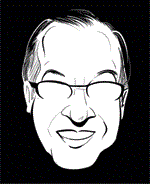
30. Stewart Reed: Chairman Transportation Design, Art Centre College of Design (52, American)
Reed has been head of the biggest transportation education course in the world, in Pasadena, California, since 2005. He also runs his own studio, has designed more than 20 concepts and been a judge for many design awards. Influential.
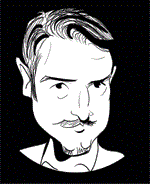
29. Marek Reichman: Design director, Aston Martin (44, British)
How much has Reichman achieved at Aston since 2005? After all, the Rapide is ‘only a LWB DB9’, say critics. But stewardship of the world’s most beautiful sports car brand isn’t easy. Compare Rapide to Panamera to gauge his talent. Influential.

28. Dale Harrow: Head of department, vehicle design. Royal College of Art (49, British)
Our list is littered with graduates from London’s RCA. In charge of arguably the most influential car design course in the world for more than a decade, Harrow has the power and responsibility to shape car design’s future stars. Inspirational.

27. Ikuo Maeda: General manager, Mazda design division (51, Japanese)
Been a Mazda man since 1982, bar a brief stint with Ford in 1999, appropriate given his name even sounds like ‘Mazda’ bar a middle E. Brought suicide doors (safely) back into fashion with the production RX-8 and became overall design boss in 2009.

26. Roverto Giolito: Director, Fiat Style (47, Italian)
Giolito’s new 500 made the world love Fiat again (and contributed greatly to its profits and brand equity). He was also responsible for the first modern-day Multipla – harder to love from the outside – but still a fantastic 3+3 interior package.

25. Gerry McGovern: Design director, Land over (54, British)
McGovern penned segment-defining production cars like the original Freelander and MGF and oversaw the reinvention of Lincoln in the early ’00s before returning to Land Rover in late 2006. Upcoming Evoque set to redefine luxury SUV design. No-nonsense maverick.
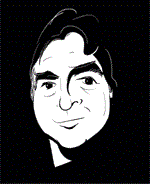
24. Peter Horbury: VP of design, Volvo (60, British)
Now into his fourth decade as the respected designer of 60+ vehicles, including the odd truck, Horbury is best known for changing the face (and shoulders) of Volvo in the ’90s before heading up Ford’s Premier Automotive Group in 2002. Rejoined Volvo 2009.

23. Gilles Vidal: Director of Style, Peugeot (37, French)
He only got the top job in January 2010 – but he’d already changed the game while head of concepts in 2009 with the BB1 scooter-car concept, now set for production, and before that a host of Citroën concepts and production cars. One to watch.

22. Mark Adams: VP of Design, General Motors Europe (48, British)
Worked on original Ka, Focus and Mk5 Fiesta, then switched to GM in 2002 and penned the current Corsa and Astra. Has the popular touch, big time. Commercially savvy.

21. Ralph Gilles: Senior VP – Design, Chrysler Group (40, American)
Haitian-American Gilles replaced Brit Trevor Creed in autumn 2008 aged just 38. Expect vastly improved quality and style from the next generation of nearly two million annual Chryslers, Jeeps and Dodges. Reports directly to Marchionne so no Fiat design-filter either.

20. Klaus Bischoff: Head of Volkswagen Design (48, German)
A VW design veteran since 1989, working his way up from interior designer to head of VW brand design by 2007. Had his paws in most key VW-badged projects during that period, plus the interior of the Bugatti Veyron. Consistent.
 19. Luc Donckerwolke: Design director, Seat (45, Belgian)
19. Luc Donckerwolke: Design director, Seat (45, Belgian)
Speaks seven languages (including Swahili), has a fondness for weaponry design (his dad was a hunter) and made Lamborghini great again before joining Seat in 2005. Current Ibiza shows new approach and there’s plenty more to come. A dangerously good designer. Inspirational.
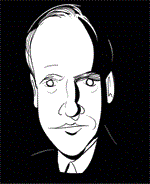 18. Ian Cullum: Design director, Jaguar (56, British)
18. Ian Cullum: Design director, Jaguar (56, British)
Like some musicians some car designers only have one or two designs in them. Callum’s not one of them with a diversity and breadth of brands and great-looking cars from hot superminis to luxury saloons and supercars. Made Jag relevant again.
 17. Freeman Thomas: Director of Strategic Design, Ford (52, American)
17. Freeman Thomas: Director of Strategic Design, Ford (52, American)
Unsung legend and long-time J Mays collaborator behind an endless variety of cars from the Audi TT and VW Beetle concepts to the wonderfully nut-job 500bhp Dodge Tomahawk show bike, 300C for Chrysler and the future-facing 2010 Ford Start concept. Visionary.
 16. Lowie Vermeersch: Design director, Pininfarina (36, Belgian)
16. Lowie Vermeersch: Design director, Pininfarina (36, Belgian)
Rising to director of the revered Italian design house in 2007 at just 33, Vermeersch has been involved in stunning production Ferraris, awesome concepts (Nido, Sintesi, 2uettottanta), mainstream cars for emerging brands (Brilliance, Chery and Tata) plus loads more confidential work for established carmakers too, as Vermeersch puts it: ‘as a sparring partner to give new ideas and an outside view.’ Vital.
 15. Wolfgang Egger: Head of design, Audi Group
15. Wolfgang Egger: Head of design, Audi Group
The most Italian German you’ll ever meet, Egger studied in Milan and helped Italian Walter de’Silva (now VW Group design boss) ‘bring the emotion’ at Alfa Romeo on the 156, 166, 147 and 8C. Followed de’Silva to Seat and then again to Audi as group design boss (in charge of Audi and Lamborghini). Shades Audi brand design chief Stefan Sielaff for influence as a result. A good egg.
 14. Peter Schreyer: Chief design officer, Kia (56, German)
14. Peter Schreyer: Chief design officer, Kia (56, German)
Made his name at Audi in the ’90s on less-is-more first generation A6, A4 Avant, A3 and TT, much admired and since copied. After working for VW in the early ’00s his move to Kia in 2006 shocked many, but the formerly unloved brand is already gaining sales and design flair. Way more influential than his Korean counterpart at Hyundai ‘Mr Oh’. Oh…
 13. Jean-Pierre Ploue: Group design director, PSA Peugeot Citroen (47, French)
13. Jean-Pierre Ploue: Group design director, PSA Peugeot Citroen (47, French)
Started at Renault on the acclaimed Mk1 Twingo (with Patrick le Quement as chief designer) and then the 1994 Argos – Renault’s TT. After eight years as Citroën’s design director adding flair (C2, C3, C4, C4 Picasso and C6) where once there was despair (Xsara, Xantia etc) he’s been in overall charge of Peugeot and Citroën since 2008. French design’s future looks bright.
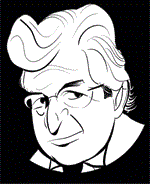
12. Giorgetto Giugaro: Co-founder, Italdesign (71, Italdesign)
Living legend behind 200-plus vehicles equating to 60 million cars worldwide from the everyman Fiat Panda and more recently Grande Punto to supercars like the Lotus Esprit and Maserati Bora. Makes this list courtesy of VW’s recent purchase of his company that should secure its future and could yet turn him into the Mandelson of the VW Group – in a good way.

11. Gorden Wagener: VP design, Mercedes-Benz, Maybach and Smart (41, German)
After stints at VW, GM Opel and Mazda, Wagener’s been a Merc career man since 1997 involved in almost all of the brand’s key cars. Since becoming head of design in 2008 he’s championed the SLS, plus the F800 and Shooting Break concepts as examples of his more fluid future direction that should banish the brutal angularity of some of the current range. Nay-sayers claim Merc hasn’t re-found its mojo since Bruno Sacco, but its design influence is still huge, as Sam Livingstone of Car Design Research puts it: ‘Wagener’s responsible for the most important luxury car brand in the world.’

10. Laurens Van Der Acker: VP, Renault Corporate Design (44, Dutch)
Filled big boots in 2009 when he took over after Patrick le Quement’s 22-year reign ended, on the back of global experience gained from a series of superb concepts for Mazda and Ford. Reporting directly to chief operating officer Patrick Pelata, he’s now in charge of Renault and Dacia brands, some 460 staff across three continents and tasked by Pelata to make ‘great cars’. Improving on current dull Renaults shouldn’t be hard but being allowed to vent his full creativity within a business needing sure-fire sales hits might be. Slight Achilles heel is the lack of more production work on his CV.
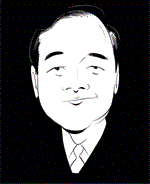 9. Takeshi Uxhiyamada: Executive VP, Toyota (63, Japanese)
9. Takeshi Uxhiyamada: Executive VP, Toyota (63, Japanese)
Who? Uchiyamada is a relative ‘unknown’ within car design circles because he’s an engineer who also serves as the head of the Design Center. His big break was chief engineer of the first generation Prius (the really ugly one) and according to his CV is big on NVH reduction. Great engineering CV, but can he really have the vision required to stimulate the creation of beautiful, relevant cars? Listed due to his power to influence how nine million vehicles per year look. Toyota used to have a de facto design boss Wahei Hirai but didn’t directly replace his position when he vacated it in 2009. Which says a lot.

8. Lorenzo Ramaciotti: Group design director, Fiat Group, and Maserati (62, Italian)
Coaxed out of retirement to take on a newly created role of head of Fiat Group design in 2007 including responsibility for Fiat, Alfa, Lancia, Abarth and also Maserati. Has an amazing track record as a Pininfarina man from 1973 to 2005 where he was in charge of countless vehicle projects including stand-out Ferraris like the 456GT, Enzo, 550 Maranello, 360 Modena, 612 Scaglietti plus the Maserati Quattroporte and Gran Turismo, as well as more accessible cars like the Alfa Romeo GTV and stunning Peugeot 406 Coupé. Pedigree-filled track record, but Fiat influence yet to be fully felt.

7. Martin Smith: Executive design director, Ford Europe, Asia Pacific and Africa (60, British)
Smith’s career has been central to many key trends of the last 30-plus years. At Audi in the late ’70s, ’80s and ’90s he helped develop the brand’s clean lines on the Audi 80, 100, Avus concept and TT (with J Mays). From 1997-2004 at GM’s European operation, he influenced the future of Opel/Vauxhall with the 2004 Insignia show car. He then moved to Ford of Europe where he has been instrumental in its dynamic ‘Kinetic design’ (think Mondeo and Fiesta) now key to its ‘One Ford’ global policy – and in 2006 added Africa and Asia Pacific to his remit. Massively influential with sales hits to match.
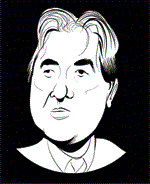
6. Nobuki Ebisawa: General manager, styling design and development division, Honda (56, Japanese)
Nobuki Ebisawa doesn’t play the flamboyant designer role – more white lab coat, shirt and tie (he’s also MD of R&D) – but since 2009 he’s had overall responsibility for the look of nearly four million Hondas every year. Joining back in 1977 he worked through Honda’s early ’80s ‘man maximum, machine minimum’ design phase and post-2000, when the firm added a more emotional dimension as witnessed in the superbly packaged Jazz (or Fit) city car, radical European Civic hatchback, aerodynamic FCX Clarity fuel-cell vehicle and wedgy CR-Z. In all, he’s behind more independent-thinking, functional and more dynamic design than he’s sometimes given credit for.
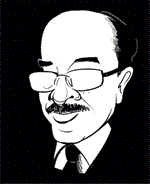
5. Ed Welburn: VP global design, GM (59, American)
Only the sixth ever design leader for the General and the first to hold the position of global design VP created in 2005. Five years in he now oversees 10 design centres in eight countries from the US to China with a 1500-strong team. The brand portfolio may have shrunk in 2009 but he’s marshalled significant change in aesthetics and quality for the brands that are left – Buick (Enclave, La Crosse), Cadillac (CTS), and even GMC (Granite concept) plus Opel and Vauxhall in Europe. Before all this, as director of advanced design, he also led the excellent GM AUTOnomy and Hy-wire fuel-cell projects. Big job, (relatively) low profile.

4. Adrian Van Hooydonk: BMW Group design and BMW director (46, Dutch)
A BMW man through and through, joining in 1992 and since thoroughly involved with Chris Bangle and his highly controversial but also very influential ‘flame surfacing’ design language of the last decade. Busier and more complex exterior surfacing cropped up across the car industry after their work and is still prevalent today. He followed in Bangle’s footsteps (but luckily not his fashion sense) to become BMW’s design director in 2004 and then in addition head of group design, including Mini and Rolls-Royce, when his mentor stepped down in 2009. Beyond cars, van Hooydonk ‘gets’ the bigger design picture and was president of BMW’s product consultancy DesignworksUSA in LA for three years. Although BMW’s current mainstream car designs have calmed down under his watch, a brand and a designer still capable of producing stunning cars such as the new production Z4 and the Vision Efficient Dynamics concept has a very positive future.

3. Shiro Nakamura: Nissan senior vice president and chief creative officer of design (59, Japanese)
Nakamura is the man who put Japanese car design on the map after decades of copycat and me-too designs. Headhunted from under-the-radar Isuzu in 1999 he oversaw an onslaught of radical concepts and high-selling production cars as part of Carlos Ghosn’s ‘Nissan Revival Plan’ including the Chappo, Cube, Jikoo, Effis, 350Z, Murano, various Micras, the Qashqai, (and soon Juke) as well as the FX45 production car and Essence concept for Infiniti – described by CAR as ‘sexier than Kate Moss naked’. Key to his success is not only his ability and work ethic – he allegedly often does 12-hour days working from a chauffeur-driven GT-R – but also his skill and willingness to communicate his designs’ relevance internally and externally and his global experience (he studied at Art Center in the US and has worked in Europe and Japan). Bonus pub fact: played jazz double bass to semi-pro standard before starting in the car industry.

2. J Mays: Global design VP, and chief creative officer (55, American)
Ten years ago Mays was responsible for eight brands – Ford, Lincoln, Mercury, Mazda, Volvo, Land Rover, Jaguar and Aston Martin. Pending Volvo’s sale to Geely this year all that will be left is Ford and Lincoln. Still, those two brands represent some 4.5million vehicles a year and globally Ford is in better overall design shape than it’s been for decades, due in no small part to Mays’ direction and execution of the ‘One Ford’ global policy – take the acclaimed European Fiesta launching into the US as just one example. Add in his legacy of successful concepts – the 1991 Audi Avus led to the TT and the 1994 VW Concept 1 to the new VW Beetle – his ability to nurture (and poach) design talent to work with him (Smith, Thomas, Horbury, van den Acker), plus thoroughbred production car designs like the Land Rover Discovery 3 and Aston DB9 and you have a man who still wields heavyweight clout.

1. Walter de’Silva: Group head of design, Volkswagen (59, Italian)
While other big design chiefs have been shedding brands (Welburn at GM and Mays at Ford) de’Silva has been busy adding them to his cap – the latest considerable feather being Porsche. This brings his tally to eight and includes some of the most famous names in motoring – Lamborghini, Bugatti, Audi, Bentley, Seat, Skoda and VW – and some 6.3million sales in 2009.
De’Silva made his name with Alfa and the beautifully proportioned 156 saloon and Sportwagon of the late ’90s with their simple curves and hidden rear door handles that gave the appearance of a coupé or shooting brake. Switching to the VW Group in 1999 he added ‘auto emocion’ to Seat with the Salsa and Tango concepts and production Leon and Altea before adding more curves, fuller volumes and gapey-grilled ’emotional design’ to the Audi brand from 2002. The current TT Mk2, A5, A6 (Mk2) and R8 supercar were all his work and have been critical and commercial successes.
As head of VW Group design since 2007 de’Silva has turned his attention to overhauling the VW brand and replacing its rather clumsy chrome-faced big grilles with slimmer, subtler ones, epitomised by the new Scirocco and Polo (Mk5). The only tiny blip in his track record was the weakly retro 2006 Lamborghini Miura tribute concept. That aside, the breadth of designs, brands, segments, consistent sales and internal and external influence has been astonishing. As auto analyst Max Warburton puts it: ‘Investors are increasingly trying to determine which company is going to be most consistent at delivering hit products.’ In de’Silva VW Group has found its hit machine.